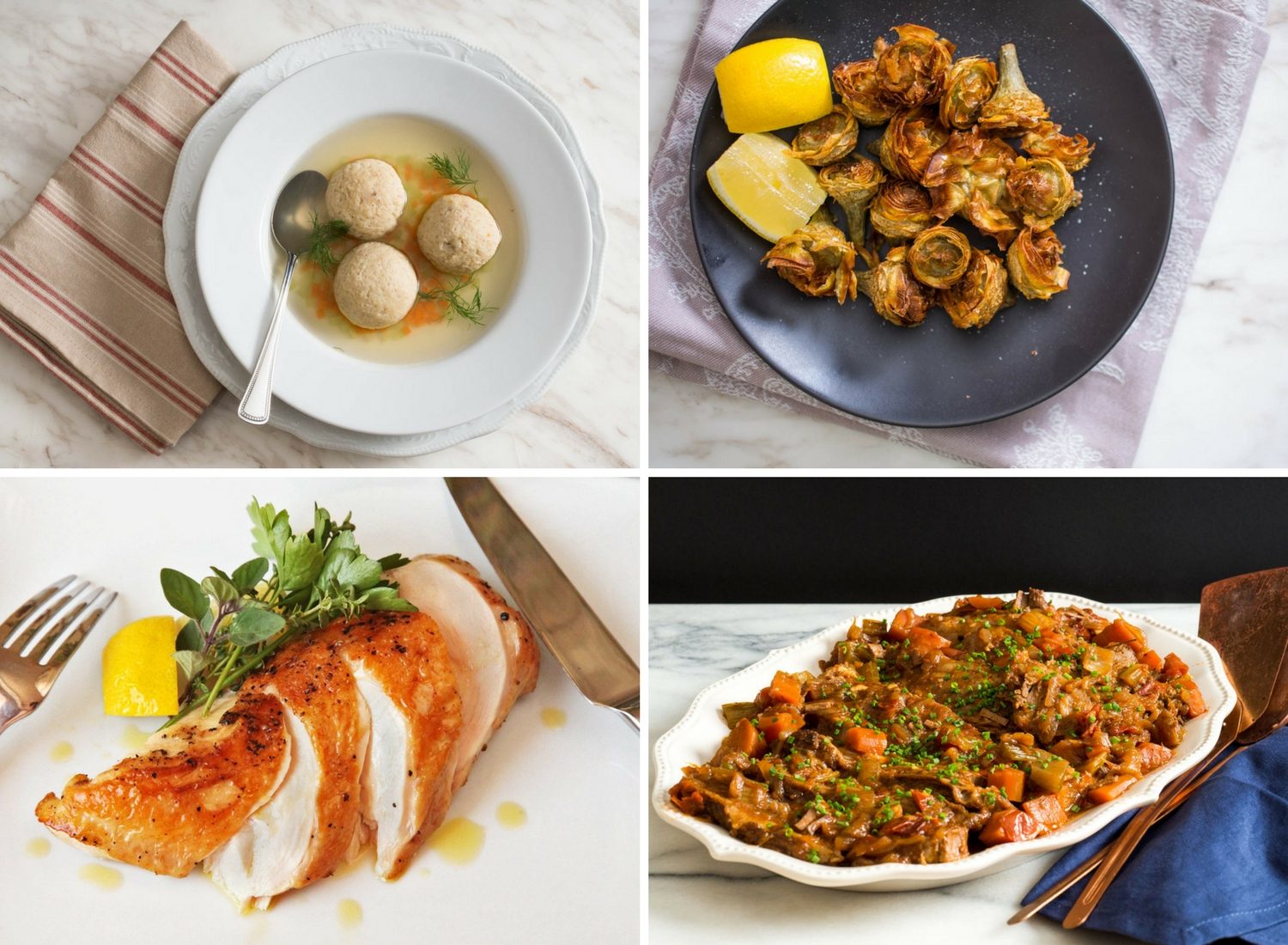
[Photograph: Daniel Gritzer, Vicky Wasik, J. Kenji López-Alt]
Technically, the most important part of Passover is, of course, the seder itself. But no one comes to a seder without expecting to be fed a proper meal, especially after they’ve drunk all that wine. Passover dinners tend to be marked by firmly entrenched traditions, upheld by even more firmly held convictions about what a “real” Jewish brisket or “real” matzo ball soup is. While there’s nothing wrong with sticking to what works for your crowd, if you (and they) are open to a little experimentation, we encourage you to have fun with the menu this year. Try a braised lamb shoulder spiced up with chilies and softly sweetened with dates; serve an appetizer of crispy fried artichokes or a Sephardic-style charoset scented with orange flower water. Read on for 14 of our favorite traditional and not-so-traditional recipes to make this year’s seder a smashing success (and stay tuned for some delicious ideas for Passover-appropriate desserts, too).
A note about the recipes that follow: Though some were designed with Passover in mind, others are meant to be more all-purpose, which means some of them contain ingredients not considered kosher for Passover—or, at least, not considered by everyone to be such. These may include soy sauce (which can be substituted with kosher tamari), Worcestershire sauce (fish-free Worcestershire sauce may be substituted), distilled white vinegar, mustard, rice, and legumes. Where possible, we’ve suggested replacements for these items. As dietary restrictions during Passover vary widely, we’ve chosen to offer a range of recipes to meet a range of preferences, with the hope that everyone will be able to find a few dishes here that they love and can add to their menu.
The Seder Plate
Homemade Preserved Horseradish
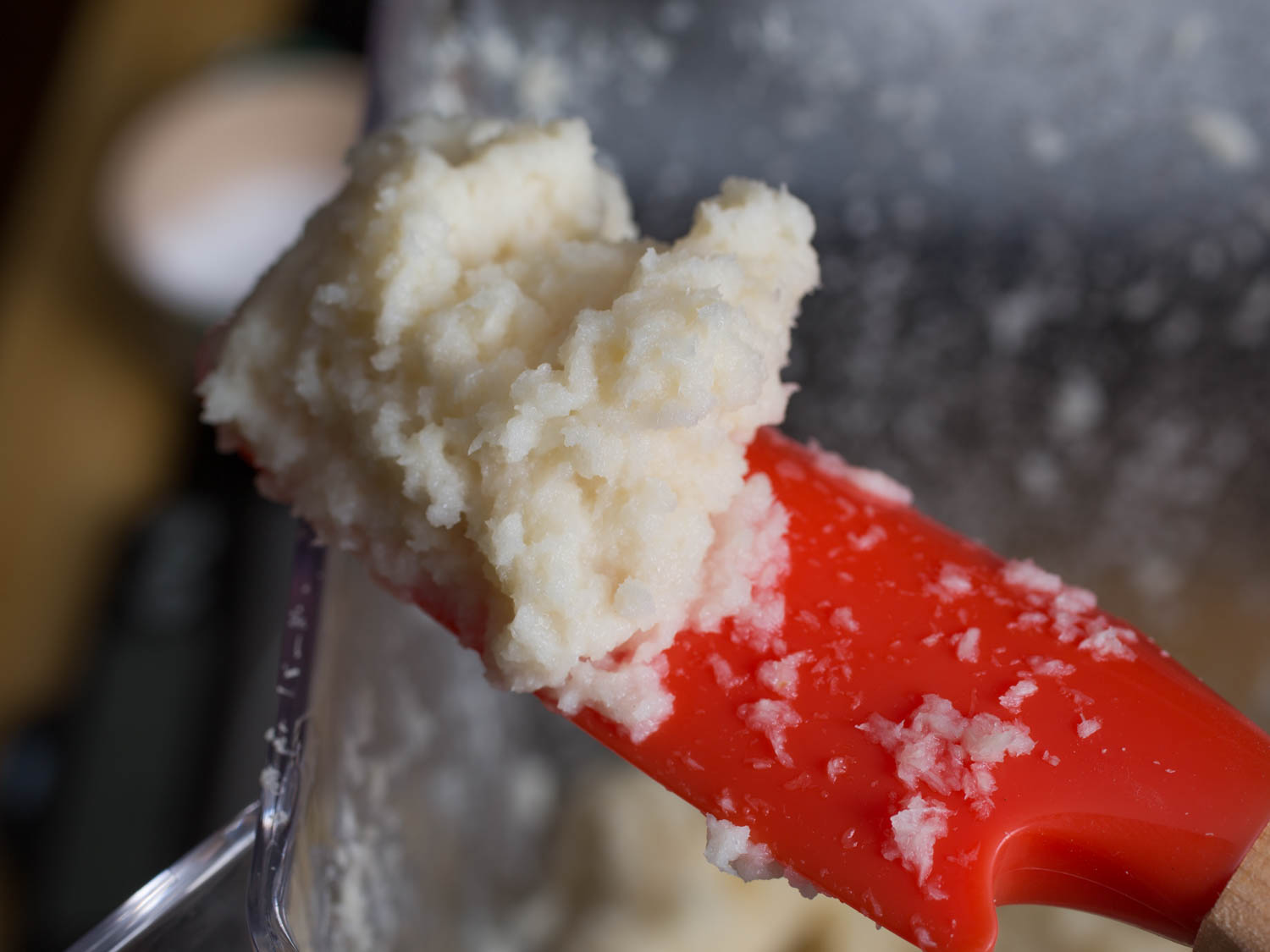
[Photograph: Vicky Wasik]
As tempting as it might be to pick up a bottle of prepared horseradish from the grocery store, it’s almost as easy to make it from scratch. It takes just three ingredients—chunks of horseradish root, a little white vinegar to keep it from browning, and a pinch of salt—and a few minutes of pulsing in a food processor or blender. Make it now, and you can use it straight through the holiday—the pungent condiment will keep in an airtight container in the fridge for about three weeks.
Get the recipe for Homemade Preserved Horseradish »
Perfect Hard-Boiled Eggs
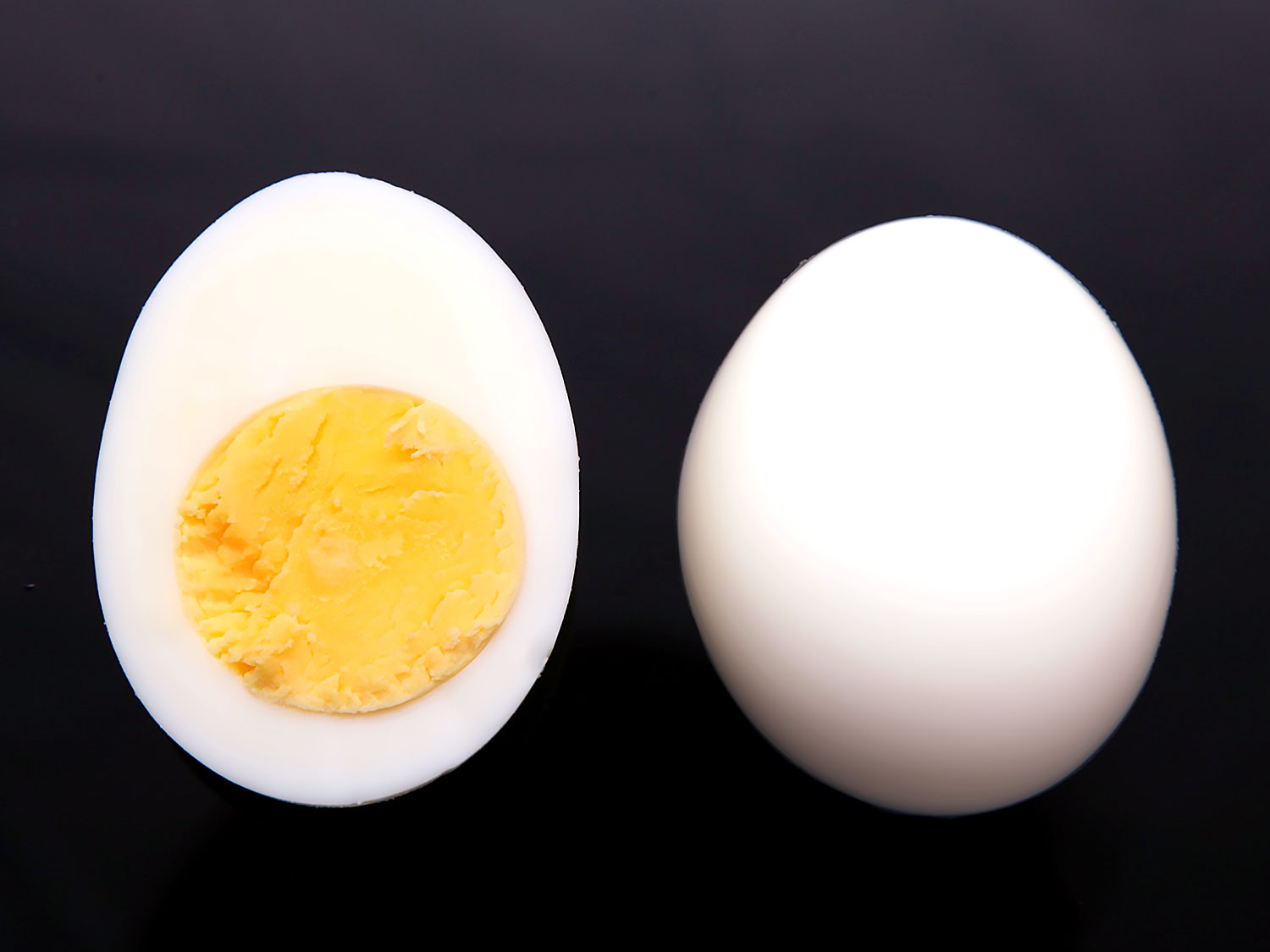
[Photograph: J. Kenji López-Alt]
Hard-boiling an egg may seem like the simplest of tasks, but it comes with a number of possible pitfalls: chalky, green-tinged yolks; rubbery whites; and, worst of all, the shell that refuses to pull away. Our heavily tested technique will save you from all of those dreaded outcomes. For easily peelable eggs, with firm but tender whites and nicely cooked yolks, start them in boiling water, then simmer for 11 minutes, shock in ice water, and remove the shell under running water. Or, even better, try steaming them instead.
Get the recipe for Perfect Hard-Boiled Eggs »
Traditional Ashkenazi Charoset With Apples and Walnuts
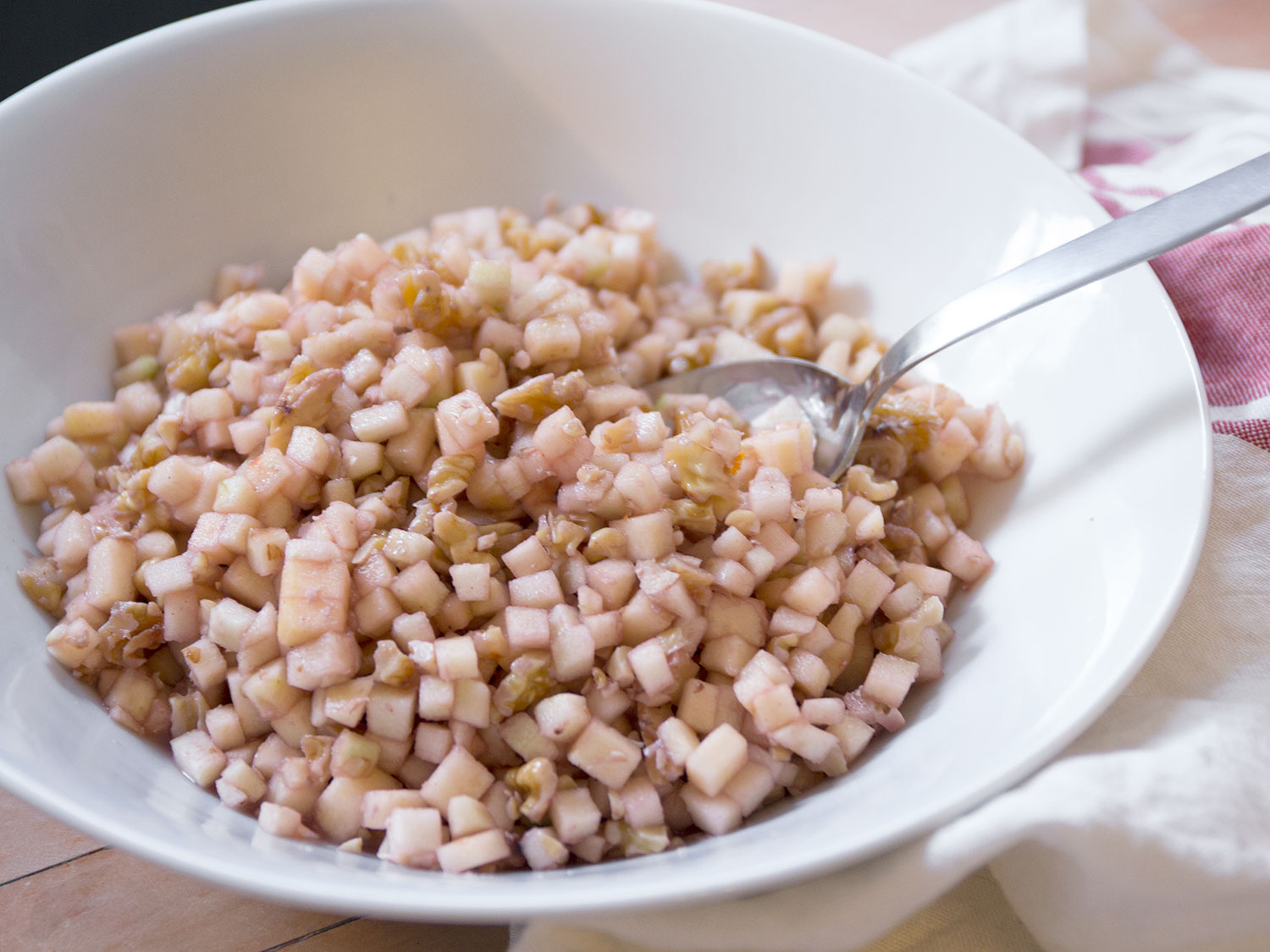
[Photograph: Niki Achitoff-Gray]
This classic Ashkenazi charoset is so tasty, you’ll be tempted to scarf up all the leftovers once the seder is over, and so simple that you may just start making it all year long. Combine diced apples and chopped toasted walnuts with a cup of sweet red Passover wine, plus plain or lightly toasted sugar and a pinch of spices, and you’re done. We like to use a mix of sweet and tart apples, like a combination of Fuji and Granny Smith, for a balanced flavor.
Get the recipe for Traditional Ashkenazi Charoset With Apples and Walnuts »
Sephardic-Style Charoset With Dried Fruit and Nuts
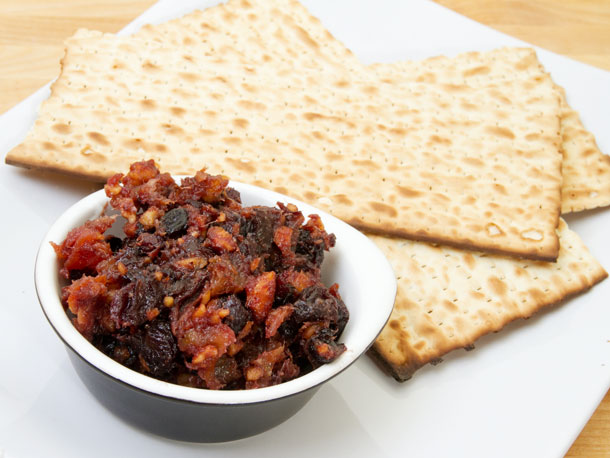
[Photograph: Robyn Lee]
Unlike the Ashkenazi version, Sephardic-style charoset incorporates dried fruits rather than fresh apples, and a wider variety of spices and nuts. Ours blends a red wine–simmered mixture of dates, dried apricots, and raisins with roasted almonds, plus a bit of fragrant orange blossom water. Chopping up the nuts and fruit in a food processor speeds things up, but make sure to leave a few chunks for texture.
Get the recipe for Sephardic-Style Charoset With Dried Fruit and Nuts »
The Dinner Plate
Hummus Masabacha (Hummus With Whole Chickpeas)
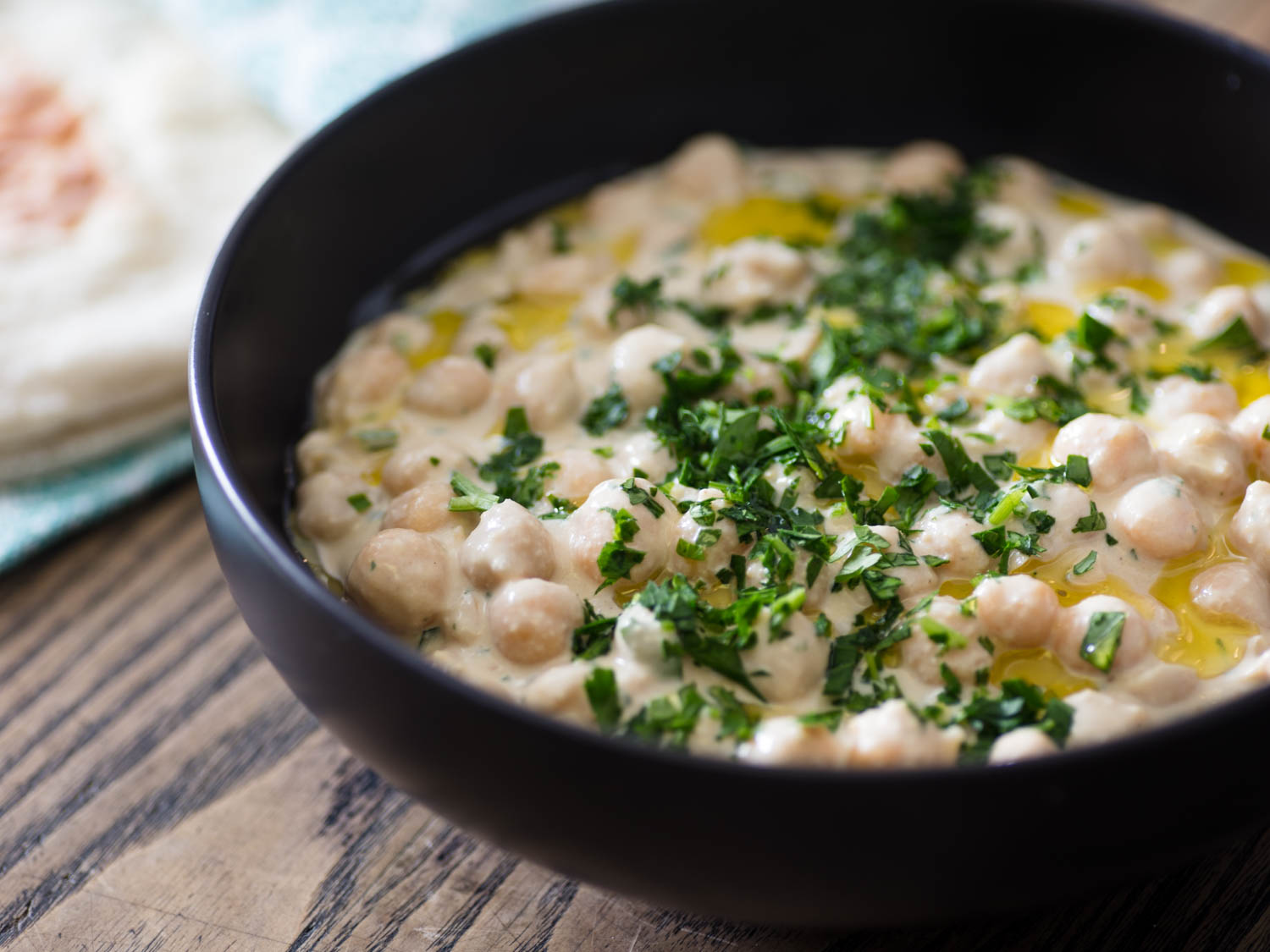
[Photograph: Vicky Wasik]
This easy variant on a traditional hummus mixes whole chickpeas with puréed ones and tahini sauce, and can be as chunky or smooth as you like. We start with Kenji’s easy tahini sauce, made by puréeing whole unpeeled (yes, unpeeled!) garlic cloves directly into lemon juice, then adding that mixture to the tahini. For the best flavor, cook dried chickpeas in water with an array of aromatics, then blend some of the cooking liquid into the sauce.
Get the recipe for Hummus Masabacha (Hummus With Whole Chickpeas) »
Roman-Jewish Fried Artichokes (Carciofi alla Giudia)
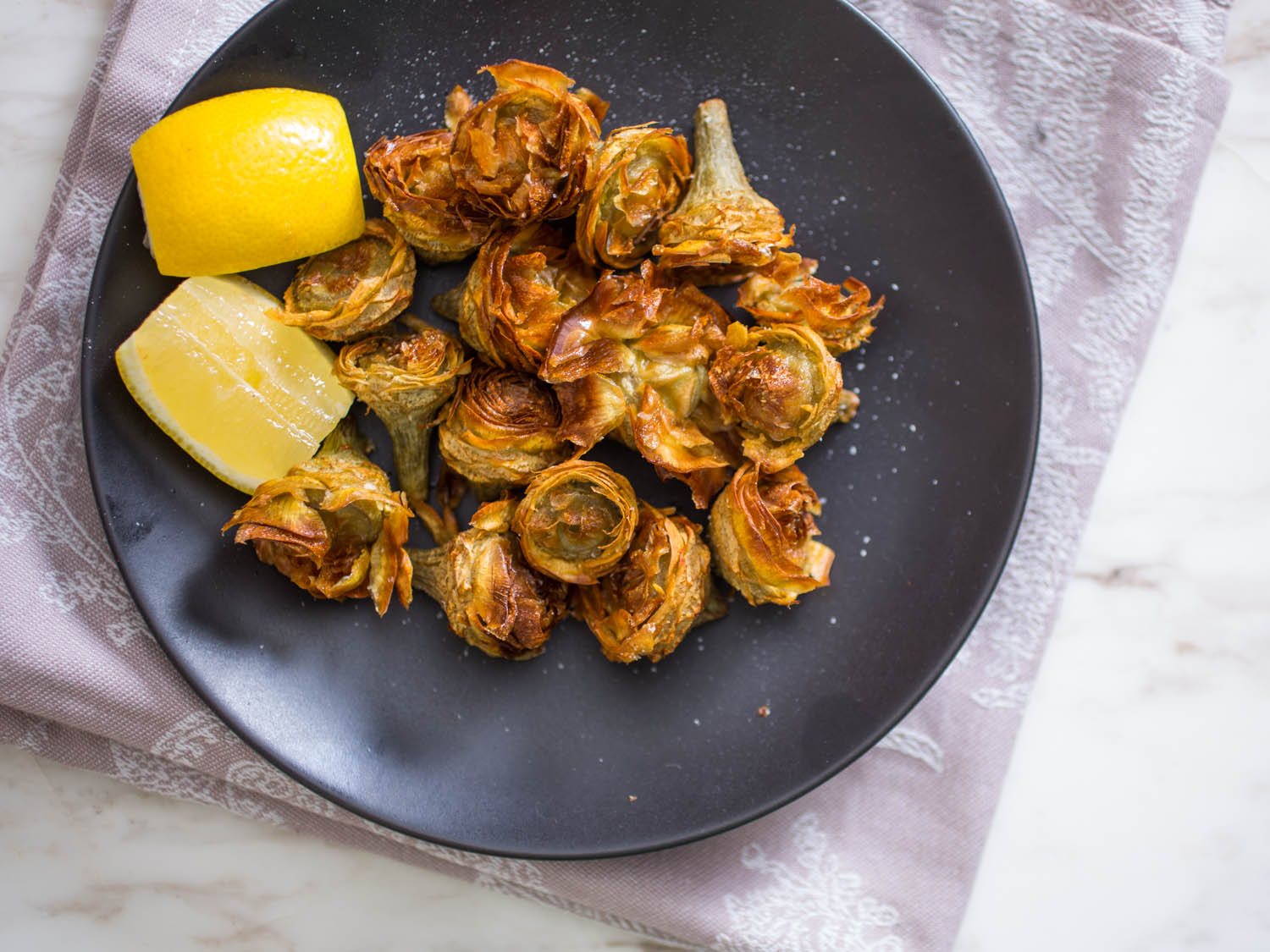
[Photograph: Vicky Wasik]
There’s a solid tradition of deep-frying in Roman-Jewish cuisine, and these shatteringly crisp artichokes, served with just a sprinkling of salt and a squeeze of lemon, are a case in point. The trick to getting them tender and crunchy, with that signature Mediterranean flavor, is double-frying them in olive oil—though you can also use a more neutral oil to emphasize more of the artichokes’ own flavor.
Get the recipe for Roman-Jewish Fried Artichokes (Carciofi alla Giudia) »
Stovetop Tzimmes With Carrots and Raisins
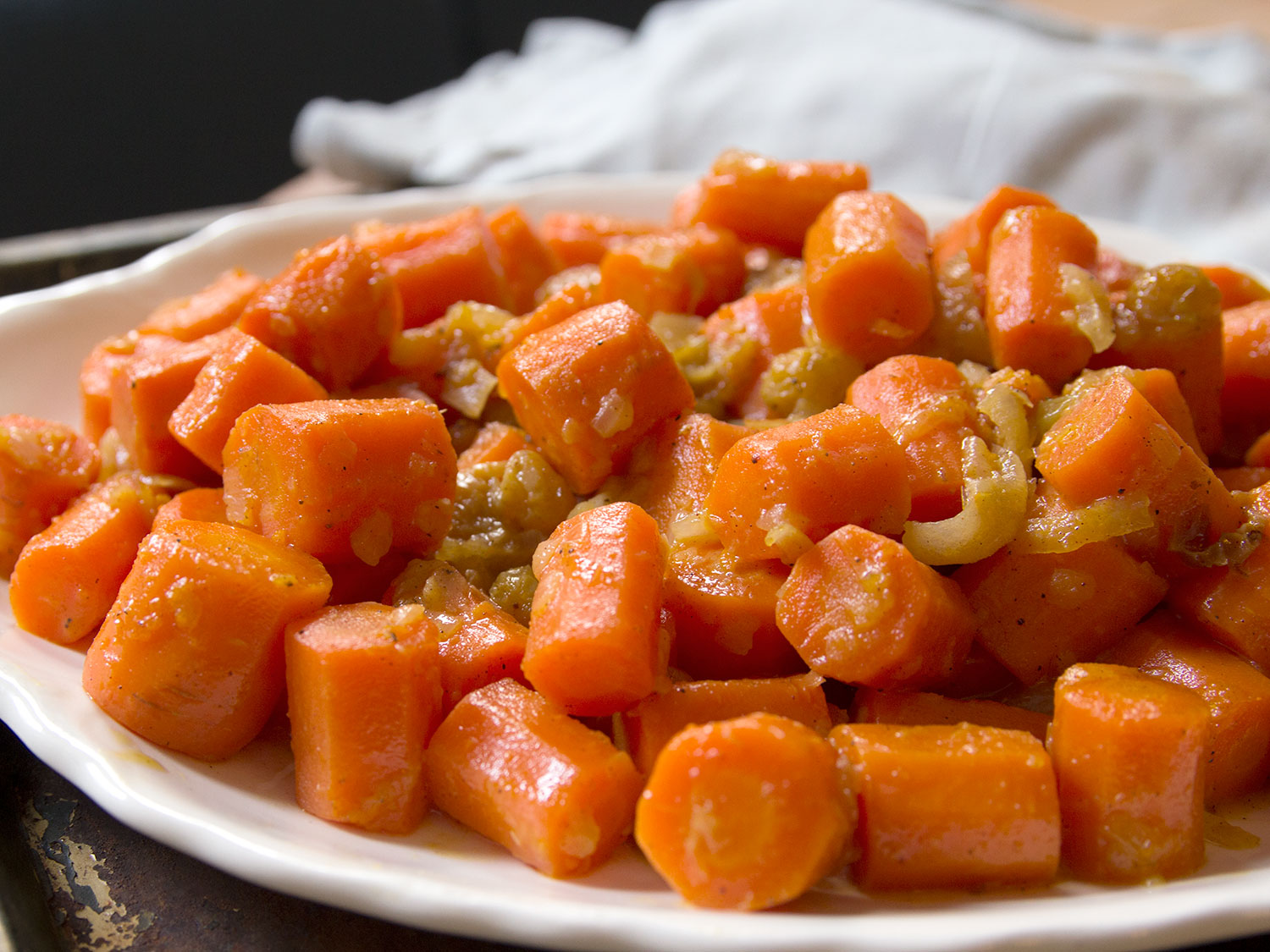
[Photograph: Niki Achitoff-Gray]
If you think of this old Passover standby as nothing more than a mound of mushy, oversweetened carrots, it’s time to revisit it with a fresh recipe. Orange juice keeps the flavor bright, and just a dab of honey highlights the carrots’ natural sweetness. A mix of cardamom and cinnamon gives the dish added complexity.
Get the recipe for Stovetop Tzimmes With Carrots and Raisins »
The Best Matzo Ball Soup
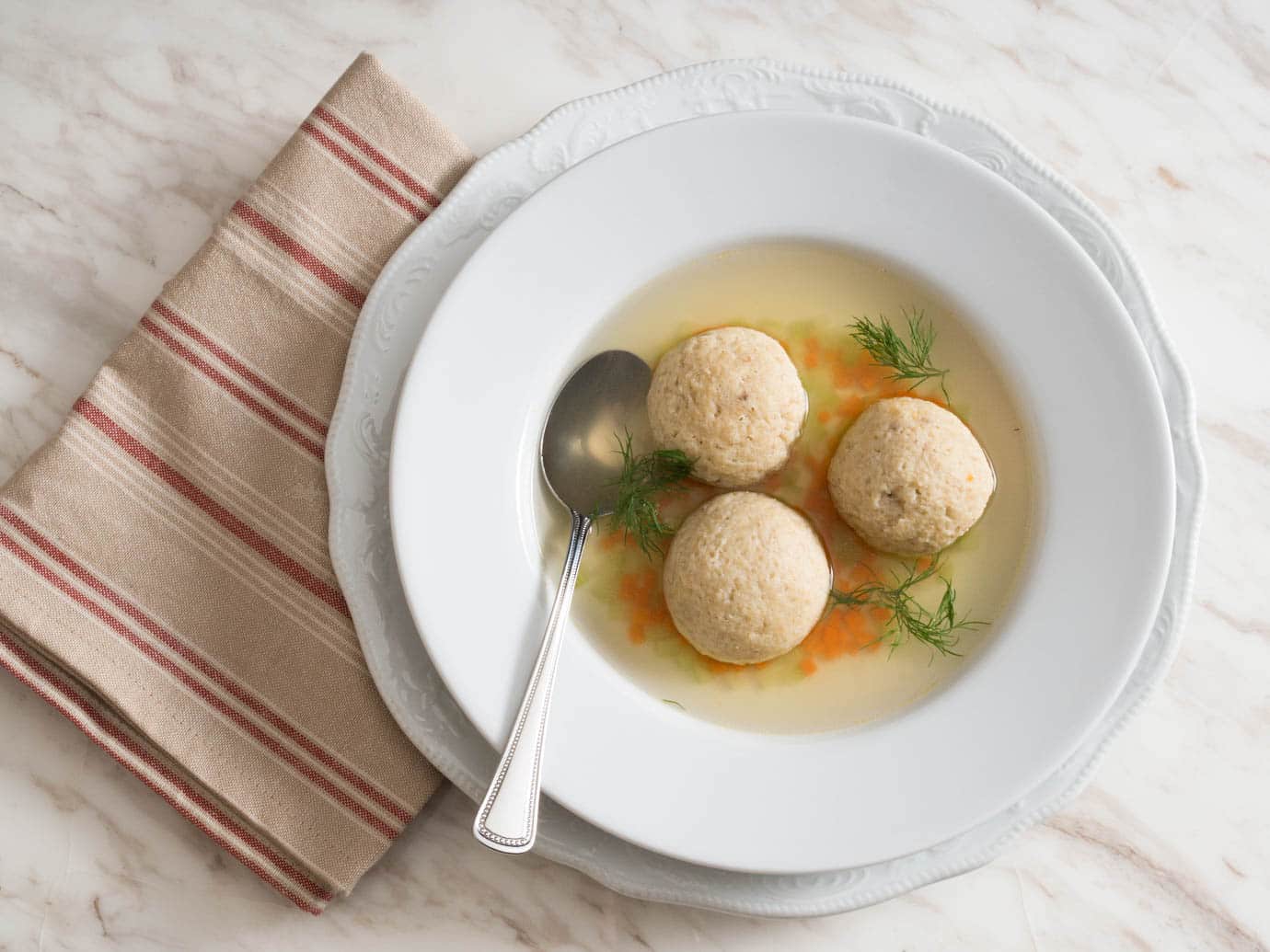
[Photograph: Daniel Gritzer]
Every family has its own matzo ball style, so our customizable recipe lets you tailor the dish exactly to your liking. With the help of baking powder, seltzer, or just plain water, you can make matzo balls that are airy, dense, or anywhere in between. No matter what style you choose, a quality chicken stock is nonnegotiable—poaching the matzo balls in stock instead of water maximizes their flavor. Want to get a little crazy this year? Try one of these wacky/delicious matzo ball variations, including pan-fried, chicken-stuffed, and deep-fried-and-chicken-skin-wrapped.
Get the recipe for The Best Matzo Ball Soup »
Warm Kale and Caramelized Mushroom Salad
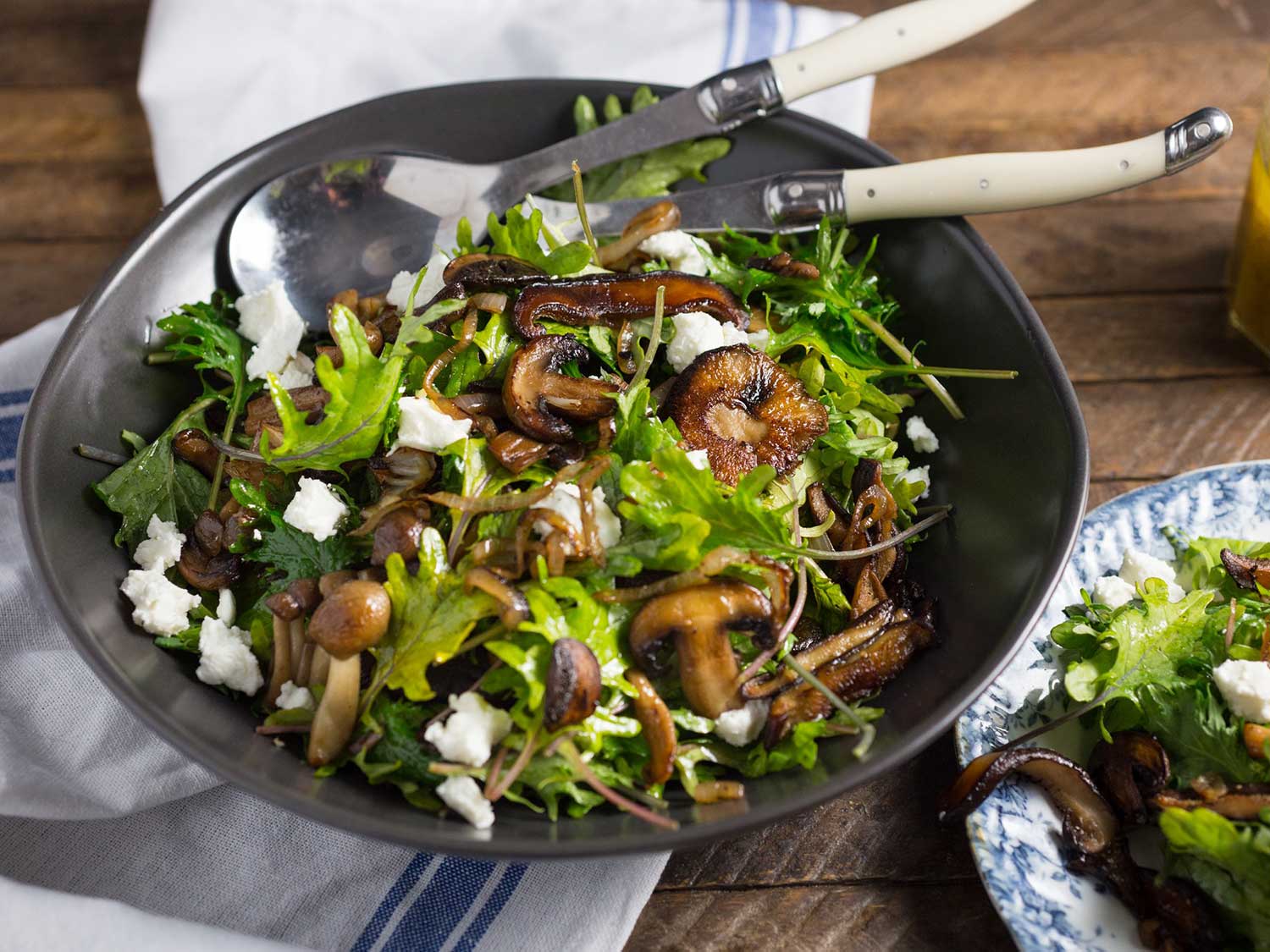
[Photograph: Matthew and Emily Clifton]
The combination of deeply browned mushrooms, hearty kale, and nutty sherry vinaigrette is so flavorful that you won’t miss the goat cheese if you choose to exclude it, which makes this salad a handy side to serve if you’re hosting a “meat” seder. If you can, use a mixture of mushrooms—shiitakes, creminis, oysters, chanterelles, and porcini will all help build optimal flavor. The warmth from the sauté will infuse the greens, wilting and softening them slightly without any additional cooking.
Get the recipe for Warm Kale and Caramelized Mushroom Salad »
Jewish-Style Braised Brisket With Onions and Carrots
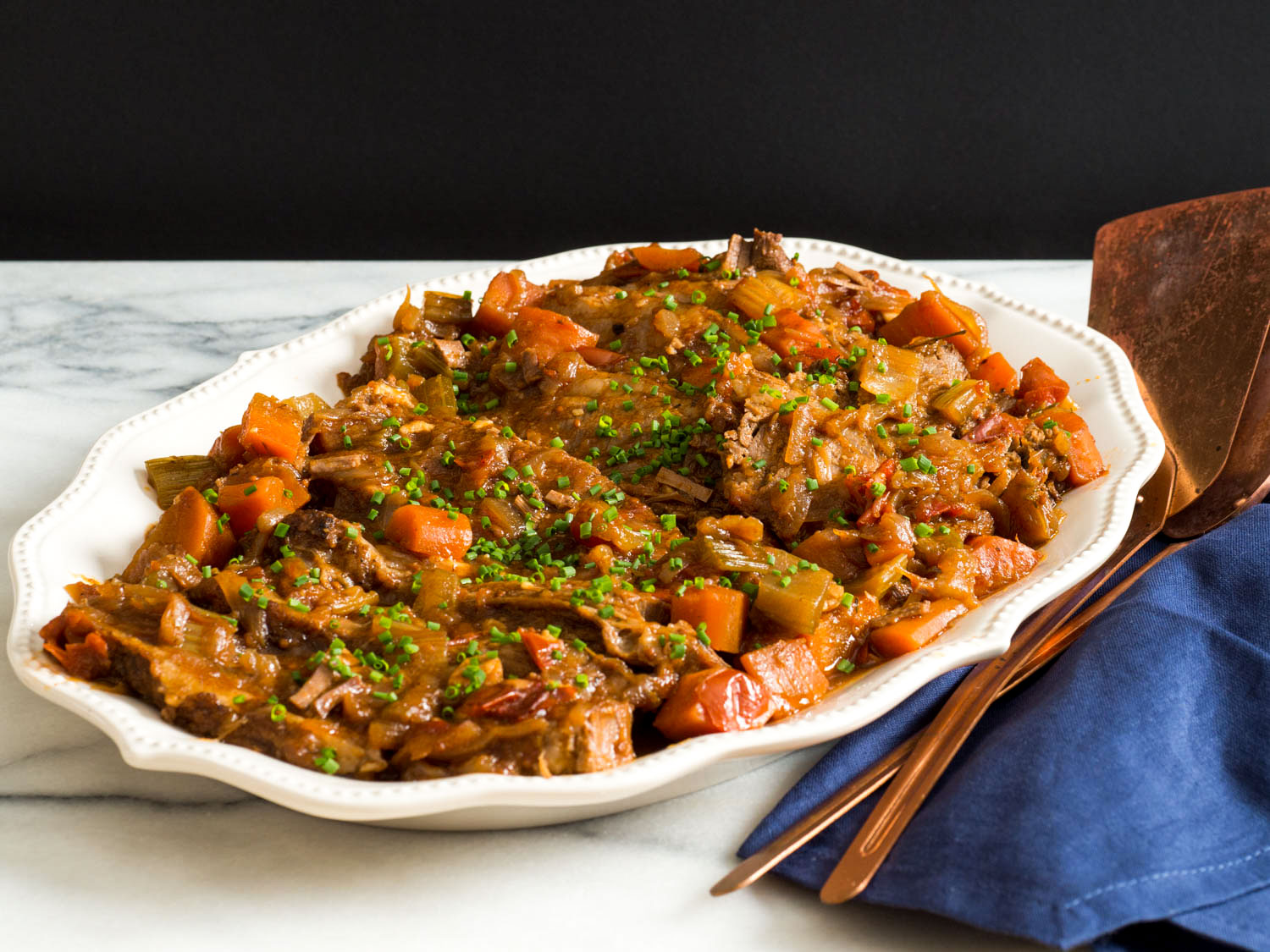
[Photograph: Daniel Gritzer]
Brisket is a notoriously difficult cut to cook—braise it too long, and it’ll be tender but dry; not long enough, and it’ll come out moist but tough. Our solution is to cover the meat while it braises to trap in the moisture, then submerge the sliced brisket in the warm braising liquid, so it reabsorbs the flavorful juices, before serving. Braising sweet onions and carrots along with the meat yields a classic accompaniment. (Do note that there is ketchup in the recipe, but you can substitute tomato paste to make it kosher for Passover.)
Get the recipe for Jewish-Style Braised Brisket With Onions and Carrots »
Braised Brisket in Apricot and Cranberry Sauce
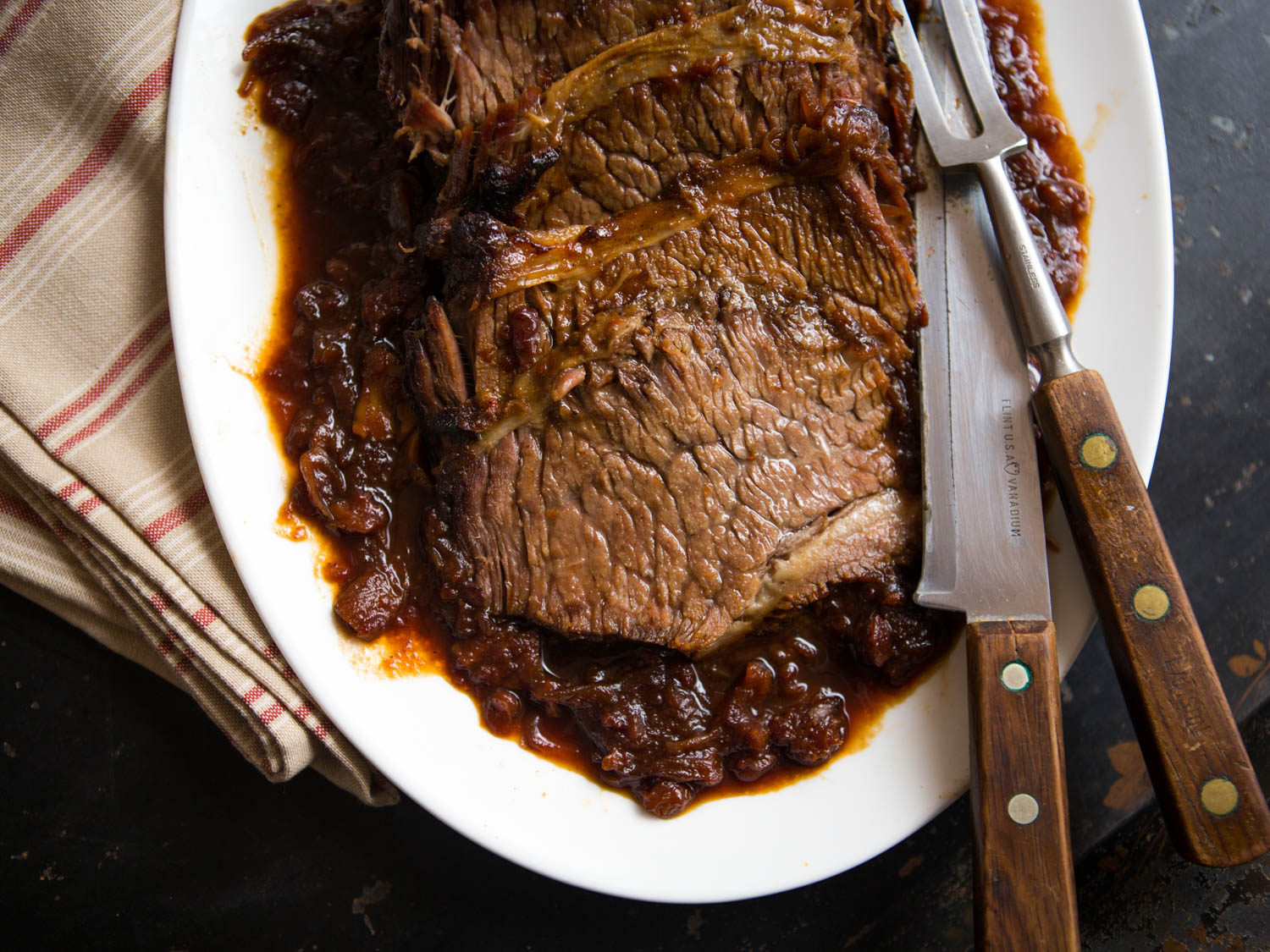
[Photograph: Vicky Wasik]
This brisket takes its inspiration from Southern barbecue. Instead of the leaner brisket flat, we call here for the point cut (also known as the deckle), a piece laced with intramuscular fat and prized in barbecue circles for its extra flavor and moistness. The tomato-based sauce also takes some cues from barbecue, incorporating brown sugar, molasses, and mustard, and gets a fruity holiday twist with the addition of dried apricots and cranberries, cranberry sauce, and apricot preserves. This recipe calls for soy sauce and Worcestershire; if you don’t consume those products during Passover, try replacing those ingredients with kosher tamari.
Get the recipe for Braised Brisket in Apricot and Cranberry Sauce »
Braised Lamb Shoulder With Dried Chilies and Dates
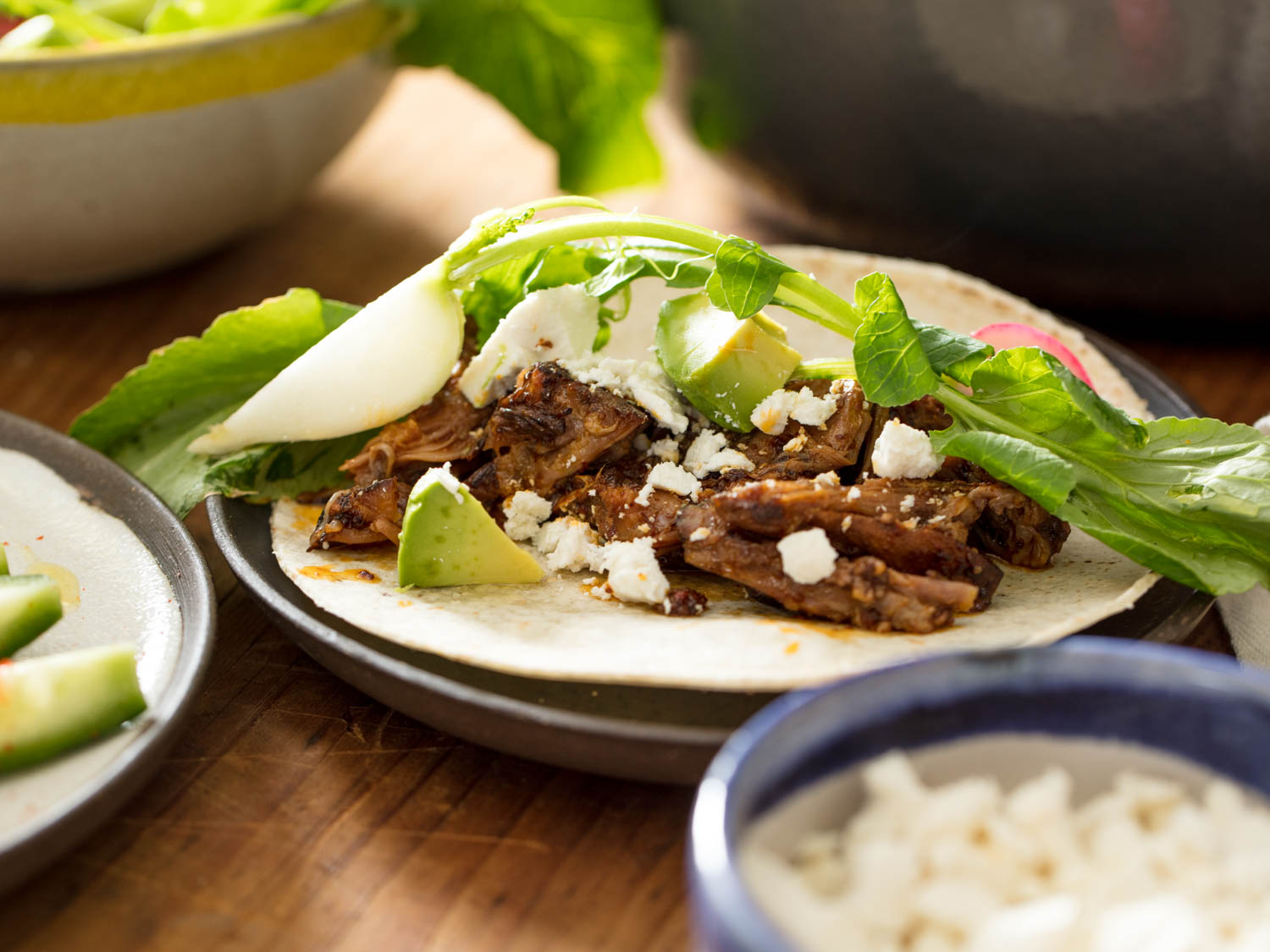
[Photograph: Vicky Wasik]
Though it wasn’t designed with the holiday in mind, this smoky braised lamb shoulder is the perfect choice if you want to try something a little more out-there. A range of powerful ingredients—dark morita chilies, fruity guajillo peppers, and bright, citrusy tomatillos—gives it tons of flavor, softened by a natural caramelly sweetness from dates. It also takes just 30 minutes of active prep time, after which it’ll slowly cook in the Dutch oven all day, no babysitting needed. To keep it Passover-appropriate, skip the optional Cotija cheese garnish, and serve it with rice or on its own instead of tortillas.
Get the recipe for Braised Lamb Shoulder With Dried Chilies and Dates »
Sous Vide Chicken Breast
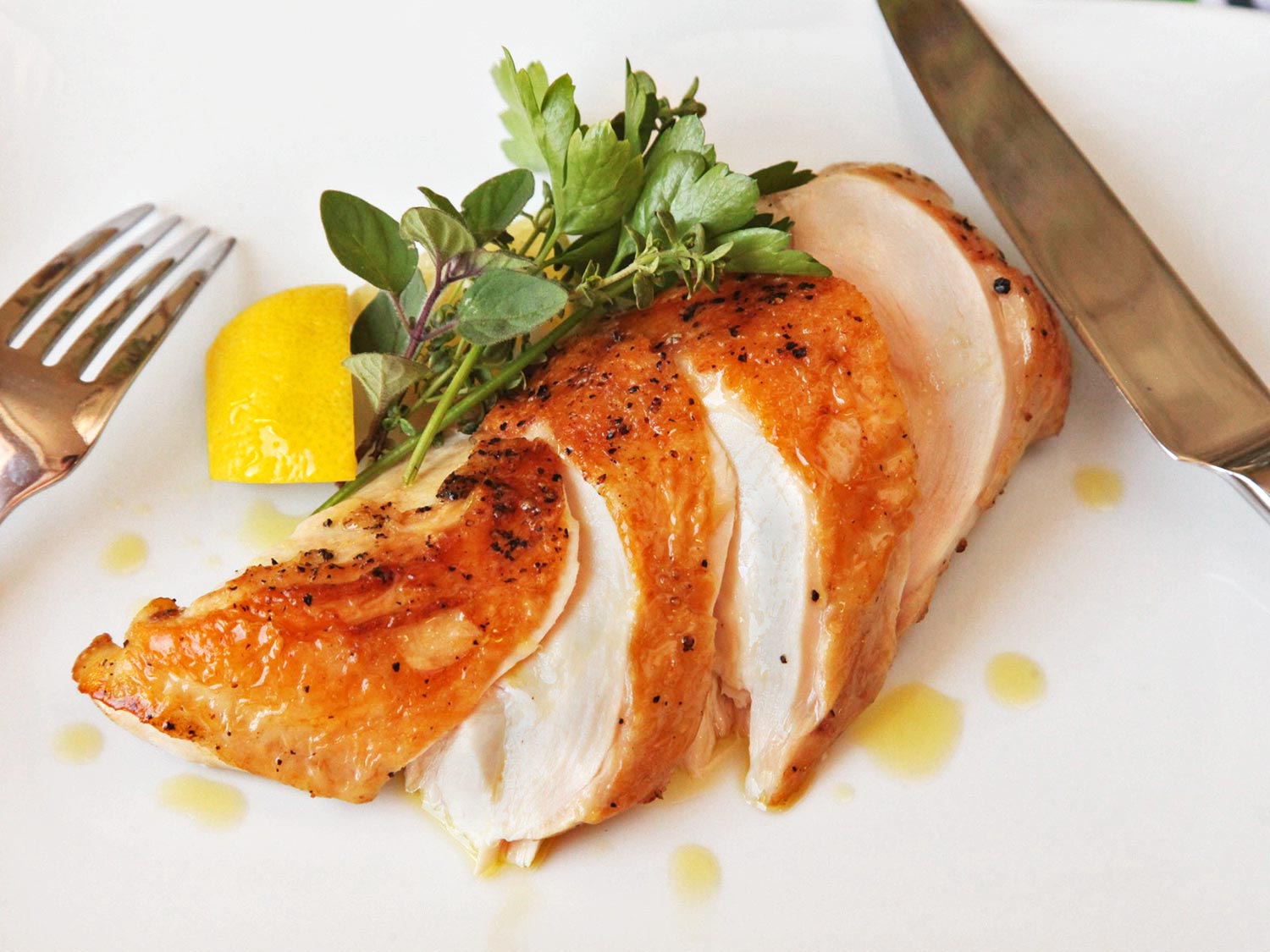
[Photograph: J. Kenji López-Alt]
No roasted meats during Passover? No problem—cooking chicken breast sous vide, followed by a quick sear on the stovetop, ensures that the meat will end up delightfully juicy and tender inside, with nicely browned and crisp skin outside. It can be time-consuming, sure, but almost all of that time is hands-off, freeing you up to prepare other dishes. And, unlike traditional methods, sous vide makes overcooking virtually impossible, thus eliminating the number one risk to chicken breast.
Get the recipe for Sous Vide Chicken Breast »
Crispy Pan-Seared Salmon Fillets
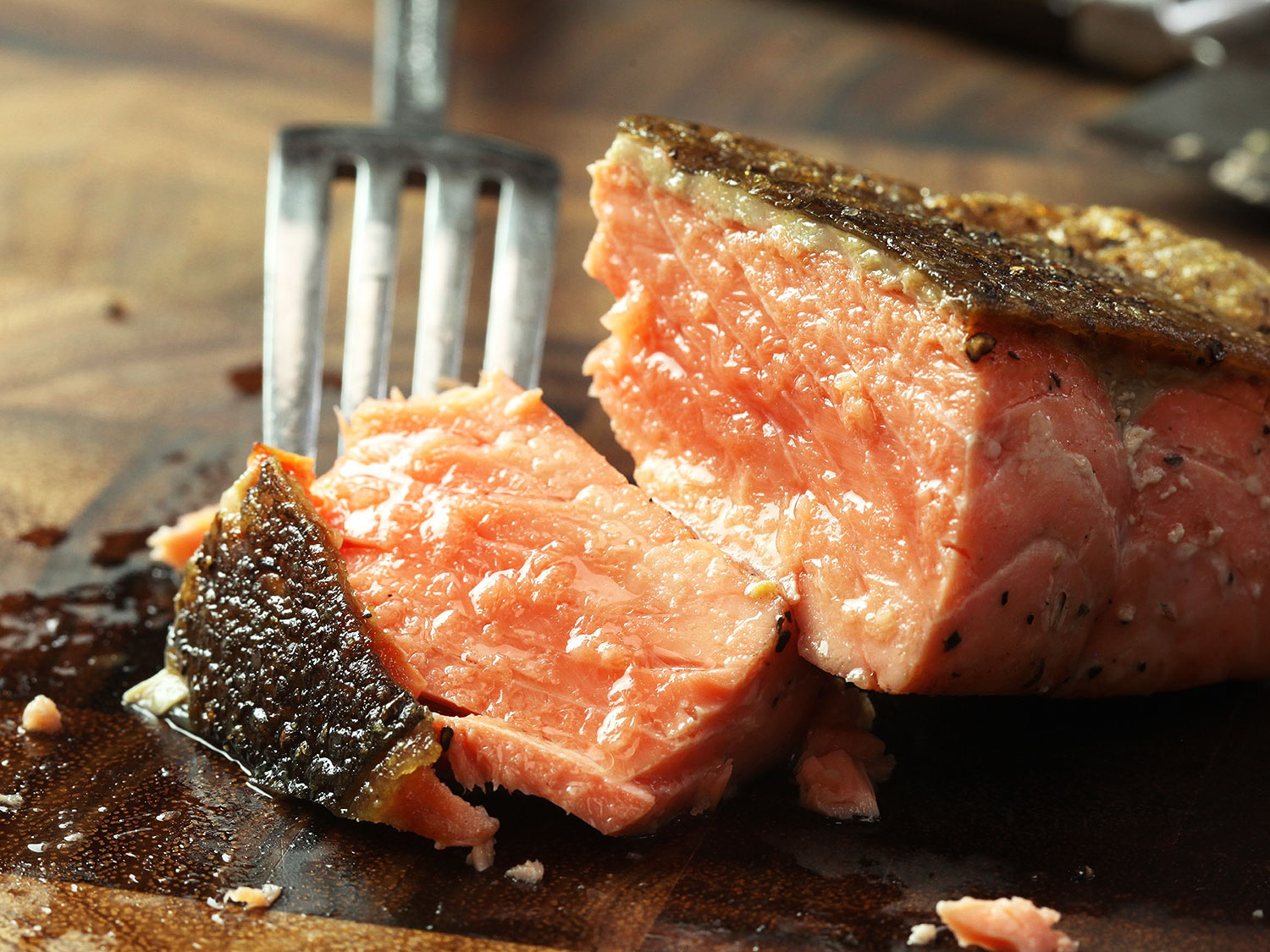
[Photograph: J. Kenji López-Alt]
Sous vide is a fine way to cook salmon, too, but if you don’t have the requisite equipment or if you’re short on time, good old-fashioned pan-searing makes a wonderful simple entrée. The key is carefully drying the fish to keep it from sticking and to get the skin—the best part!—extra crisp. Cooking the fillets most of the way through on one side will heat the fish more gently, keeping it moist and tender.
Get the recipe for Crispy Pan-Seared Salmon Fillets »
Source link